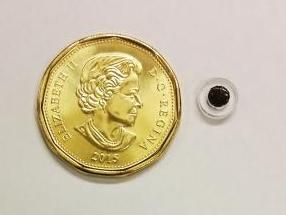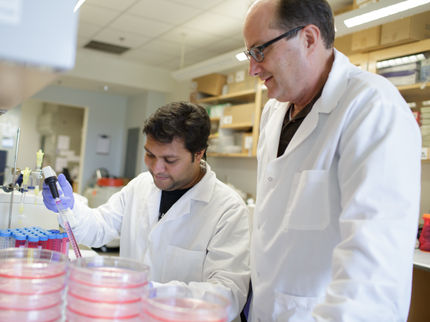MIT team targets ovarian cancer with nanoparticles
New gene therapy technique could fight late-stage tumors
Tiny particles carrying a killer gene can effectively suppress ovarian tumor growth in mice, according to a team of researchers from MIT and the Lankenau Institute.
The findings could lead to a new treatment for ovarian cancer, which now causes more than 15,000 deaths each year in the United States. Because it is usually diagnosed at a relatively late stage, ovarian cancer is one of the most deadly forms of the disease.
The new treatment, reported in the Aug. 1 issue of the journal Cancer Research, delivers a gene that produces the diphtheria toxin, which kills cells by disrupting their ability to manufacture proteins. The toxin is normally produced by the bacterium Corynebacterium diphtheriae.
Human clinical trials could start, after some additional preclinical studies, in about a year or two, says Daniel Anderson, research associate in the David H. Koch Institute for Integrative Cancer Research at MIT and a senior author of the paper.
Currently ovarian cancer patients undergo surgery followed by chemotherapy. In many cases, the cancer returns after treatment, and there are no good therapies for recurring and advanced-stage tumors.
Anderson and others from MIT, including Institute Professor Robert Langer, along with researchers from the Lankenau Institute, led by Professor Janet Sawicki, found that the gene-therapy treatment was equally as effective, and in some cases more effective, than the traditional chemotherapy combination of cisplatin and paclitaxel. Furthermore, it did not have the toxic side effects of chemotherapy because the gene is engineered to be overexpressed in ovarian cells but is inactive in other cell types.
To further ensure tumor-focused effects, the nanoparticles were administered by injection into the peritoneal cavity, which encases abdominal organs such as the stomach, liver, spleen, ovaries and uterus. Ovarian cancer is known to initially spread throughout the peritoneal cavity, and current therapeutic approaches in humans include direct injection into the peritoneal space, thereby targeting the therapy to the ovaries and nearby tissues where tumors may have spread.
The new nanoparticles are made with positively charged, biodegradable polymers known as poly(beta-amino esters). When mixed together, these polymers can spontaneously assemble with DNA to form nanoparticles. The polymer-DNA nanoparticle can deliver functional DNA when injected into or near the targeted tissue.
For several years, the MIT-Lankenau team has been developing these nanoparticles as an alternative to viruses, which are associated with safety risks. In addition to ovarian cancer, these nanoparticles have demonstrated potential for treatment of a variety of diseases, including prostate cancer and viral infection
"I'm so pleased that our research on drug delivery and novel materials can potentially contribute to the treatment of ovarian cancer," Langer said.
In future studies, the team plans to examine the effectiveness of nanoparticle-delivered diphtheria toxin genes in other types of cancer, including brain, lung and liver cancers.
Other news from the department science
Most read news
More news from our other portals
See the theme worlds for related content
Topic world Gene therapy
Genetic diseases once considered untreatable are now at the center of innovative therapeutic approaches. Research and development of gene therapies in biotech and pharma aim to directly correct or replace defective or missing genes to combat disease at the molecular level. This revolutionary approach promises not only to treat symptoms, but to eliminate the cause of the disease itself.

Topic world Gene therapy
Genetic diseases once considered untreatable are now at the center of innovative therapeutic approaches. Research and development of gene therapies in biotech and pharma aim to directly correct or replace defective or missing genes to combat disease at the molecular level. This revolutionary approach promises not only to treat symptoms, but to eliminate the cause of the disease itself.




















































